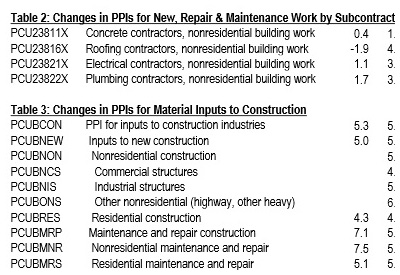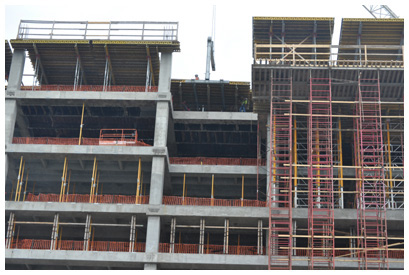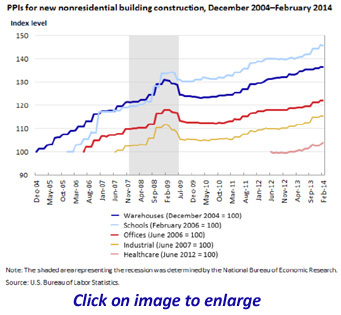AGC's Data DIGest: July 14-18, 2014
Most states add jobs year-over-year but not since May; most PPIs remain mild in June Editor’s note: Construction Citizen is proud to partner with AGC America to bring you AGC Chief Economist Ken Simonson's Data DIGest. Check back each week to get Ken's expert analysis of what's happening in our industry.
Editor’s note: Construction Citizen is proud to partner with AGC America to bring you AGC Chief Economist Ken Simonson's Data DIGest. Check back each week to get Ken's expert analysis of what's happening in our industry.
Seasonally adjusted construction employment increased in 38 states and the District of Columbia from June 2013 to June 2014 and decreased in 12 states, an AGC analysis of Bureau of Labor Statistics (BLS) data released Friday showed. The largest percentage gains were in Florida (11%, 41,700 jobs), Nevada (10%, 5,900) and Utah (9.3%, 6,800). Florida added the most jobs, followed by California (29,800, 4.7%) and Texas (19,100, 3.1%). The steepest 12-month percentage losses occurred in New Jersey (-8.1%, -11,200) and Alaska (-5.5%, -900). New Jersey lost the most construction jobs, followed by Arizona (-4,500, -3.6%). For the month, 21 states and D.C. added construction jobs, 27 states lost jobs and Arizona and New Mexico had no change. [node:read-more:link]


 Starts jump in June, Reed says; several reports point to growth in diverse segmentsin May
Starts jump in June, Reed says; several reports point to growth in diverse segmentsin May Editor’s note: Construction Citizen is proud to partner with
Editor’s note: Construction Citizen is proud to partner with  Editor’s note: Construction Citizen is proud to partner with
Editor’s note: Construction Citizen is proud to partner with  Editor’s note: Construction Citizen is proud to partner with
Editor’s note: Construction Citizen is proud to partner with  Editor’s note: Construction Citizen is proud to partner with
Editor’s note: Construction Citizen is proud to partner with  Editor’s note: Construction Citizen is proud to partner with
Editor’s note: Construction Citizen is proud to partner with 
 Editor’s note: Construction Citizen is proud to partner with
Editor’s note: Construction Citizen is proud to partner with  Editor’s note: Construction Citizen is proud to partner with
Editor’s note: Construction Citizen is proud to partner with 